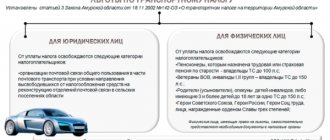One of the most important points that sooner or later any novice entrepreneur will have to decide on is what taxation system he should work under. This is important, since the taxation system determines not only how to keep accounts, submit declarations and reports, but also how much taxes and fees will be levied on the organization. It must be said that not only young businessmen may be puzzled by the problem of choosing a tax system. In the process of work, a change in the tax regime for some reason may be necessary for enterprises that have been existing on the market for a long time. In Russia, there are two most commonly used tax regimes for enterprises and organizations - general and simplified. Now we will talk about the simplified one, or, as it is also called in accounting circles, “simplified”.
Is VAT paid under a simplified taxation system?
The answer to this question is given by Art. 346.11 of the Tax Code of the Russian Federation, according to the norms of which firms operating on the simplified tax system are not recognized as VAT payers, except in cases relating to:
- import of goods into the Russian Federation;
- tax specified in Art. 174.1 of the Tax Code of the Russian Federation (operations under simple partnership and trust management agreements).
In addition, VAT under the simplified tax system must be paid to “simplified” tax agents. They will have to do the same when they issue invoices to their partners that include VAT. Situations in which “simplified people” are considered tax agents are given in Art. 161 of the Tax Code of the Russian Federation: transactions of sale, purchase and lease of state property, acquisition of goods, works, services on the territory of Russia from foreign counterparties not registered with the Russian tax authorities.
For more details, see the material “Who is recognized as a tax agent for VAT (responsibilities, nuances)” .
For information on how to take into account “input” and “import” VAT under the simplified tax system, see the Ready-made solution from ConsultantPlus. Get trial access to K+ for free.
What income does not need to be taken into account in the simplified tax system?
Not all money received is your income. When calculating the simplified tax system, you do not need to take into account:
- loan repayment;
- obtaining a loan;
- replenishing your account with personal money;
- security deposit or pledge;
- refund from the supplier;
- erroneous receipts from a counterparty or bank - Letter of the Ministry of Finance of the Russian Federation dated November 7, 2006 N 03-11-04/2/231;
- money received by an agent under an agency agreement, except for agency fees;
- grants;
- income from business on a different taxation system, if you combine the simplified tax system with UTII or a patent;
- other income from Art. 251 NK.
Individual entrepreneurs have income that is not taken into account in the simplified tax system, but personal income tax is withheld from them at a rate of 35%:
- The cost of winnings and prizes from participation in incentive competitions that are held to advertise products. Personal income tax must be paid on that part of the winnings whose value is above 4,000 rubles. Personal income tax is transferred not by the individual entrepreneur himself, but by the organizer of the competition.
- Saving on interest when receiving a loan at a rate below ⅔ of the refinancing rate. The bank itself will calculate and pay personal income tax to the tax office.
Simplified Taxation System and VAT: purchase from a foreign person on the territory of the Russian Federation
entered into an agreement with a foreign manufacturer for the purchase of materials, while the sale of materials is carried out on the territory of the Russian Federation. What will happen to VAT in this case? It depends on whether the “foreigner” has a permanent establishment in the Russian Federation. A Russian company should pay VAT under the simplified tax system only if there is no such representative office. In this case, the Russian buyer is a tax agent who, in accordance with paragraphs. 1 and 2 tbsp. 161 of the Tax Code of the Russian Federation, is obliged to withhold VAT from the foreign counterparty and pay it to the budget.
Example
A Russian company, using the simplified tax system, entered into a contract with a foreign seller who does not have a permanent representative office in Russia for $12,000, including VAT. The contract is executed on the territory of the Russian Federation. In this case, the Russian company needs to withhold VAT from the “foreigner” under the simplified tax system in the amount of $2,000 and transfer it to the budget, and pay the remaining $10,000 for purchases.
To summarize: a “simplified” seller is required to pay VAT if the place of transaction is the Russian Federation and foreign sellers do not have the independent ability to pay VAT due to the fact that they do not have a permanent establishment in the Russian Federation.
For information on the procedure for deducting VAT withheld by a tax agent, read the article “How can a tax agent deduct VAT when purchasing goods (work, services) from a foreign seller.”
When to take into account income of the simplified tax system
It's important to record earnings on the correct date because it determines when you pay tax on that money.
Earnings are recorded on the day you receive them. This is called the cash method of revenue recognition. If the income is cash, take it into account on the day the money arrives in your bank account or cash register. Prepayment must also be taken into account on the day of receipt.
In some situations, income must be taken into account before you receive the money. For example, you sell through a courier who receives payment and transfers it to you. In this situation, income is taken into account on the day the client paid the courier, despite the fact that you have not yet received the money.
If the income is non-monetary, for example, offsetting mutual obligations with a client, take it into account on the day when you signed the act of offset or other document.
For example, you developed a website for a furniture showroom, and he supplied you with office furniture. The counterparty must pay 100,000 rubles for the website, and you must pay him the same amount for the furniture. In order not to transfer money from account to account, you agreed on a mutual settlement, after which no one owes anyone. To formalize the agreement, you sign an act of offset. On the same day, you need to take into account 100,000 rubles in the income of the simplified tax system.
VAT when working on the simplified tax system: is there a tax when renting state property?
In the case of leasing state property, in accordance with clause 3 of Art. 161 of the Tax Code of the Russian Federation, the tenant will have to pay VAT under the simplified tax system. In this case, the tax base will correspond to the amount of rent including VAT. Moreover, the need to pay tax does not depend on whether the payment in the agreement with the lessor is indicated with VAT or without it: if the price is indicated without VAT, the “simplified” will need to charge a tax on top of it and pay it to the budget.
See also the material “The Federal Tax Service reminded when the duties of an agent do not arise when renting government property .
Rate of the simplified tax system “Income”
The tax rate shows how much percent of income the state will have to pay. In most cases it is 6%. But there are regions that have reduced the rate.
In Crimea and Sevastopol the rate is 4%. In Sevastopol, you can pay even less - 3%, if you run a business from the list of preferential activities. In the Chechen Republic, the tax rate depends on the number of employees and ranges from 1% to 6%.
In Moscow, St. Petersburg and Yekaterinburg, the simplified taxation system rate is standard - 6%.
Find out on the tax website in the section “Features of regional legislation” what rate is valid in your region.
If your annual income exceeds 150 million or there are more than 100 employees, then the rate for any region will increase to 8%.
Simplified VAT when purchasing state property
When selling state property, the tax base, according to clause 3 of Art. 161 of the Tax Code of the Russian Federation, corresponds to the amount of income from the sale including VAT. In this case, it is not the seller of state property who must pay the tax, but its buyer, who is recognized as a tax agent. It is he (in this case, the “simplified” buyer) who is obliged to calculate VAT under the simplified tax system, withhold it from income payable, and transfer it to the budget.
However, sub. 12 paragraph 2 art. 146 of the Tax Code provides the opportunity for a “simplified” buyer not to withhold VAT on the income of the seller of state property if the conditions for the purchase of state and municipal property established by Art. 3 of the Law of the Russian Federation “On the peculiarities of the alienation of real estate in state ownership...” dated July 22, 2008 No. 159-FZ:
- As of July 1, 2015, the property rented by the simplifier had already been leased to him for at least 2 years.
- He has no arrears of rent or other related payments (fines, penalties).
- The property is not included in the approved list of property intended for rental and free from the rights of third parties.
- On the day of concluding the repurchase agreement, the simplifier is listed in the register of small and medium-sized businesses.
Who can and who cannot work under the simplified tax system
The simplified tax system in Russia is very common, perhaps because the law provides that any enterprises and organizations that provide a certain list of works and services to the population can use it. The exceptions are:
- Investment funds, banks, pawnshops, microfinance organizations and other financial structures
- Non-state pension funds, insurance organizations
- Organizations with branches
- Budgetary organizations
- Those companies that organize and conduct gambling and similar events
- Companies that are parties to production sharing agreements
- Organizations engaged in the extraction and sale of minerals (except for common ones, such as clay, sand, crushed stone, peat and others)
- Enterprises registered in other states
- Companies in which the share of participation of other companies is more than 25% (except for non-profit organizations, budget educational institutions)
- Enterprises producing excisable goods (alcohol, alcohol, tobacco, cars and motorcycles, gasoline, diesel fuel, motor oils, see the full list in Article 181 of the Tax Code of the Russian Federation)
- Companies with more than 100 employees
- Organizations that have switched to Unified Agricultural Tax
- Those enterprises whose residual value of fixed assets is more than 100 million rubles
- Companies that did not report the transition to the simplified tax system within the time limits and in the manner prescribed by law
It should be noted that changes occur periodically in this part of the Law, so we recommend that you periodically monitor this list.
Issuing an invoice with VAT instead of a document without VAT
There are cases when a “simplifier”, at the request of the buyer, issues an invoice in which he indicates VAT, although he is exempt from it. By doing this, he does himself a disservice: as a result, he will have to not only pay the VAT allocated in the invoice, but also submit a VAT return to the simplified tax system.
We recommend that you read the following materials:
- “A simplifier should not pay VAT if the buyer mistakenly indicated the tax on the payment slip”;
- “How to take into account input VAT under the simplified tax system?”
All the details of reflecting “input” VAT in the book of accounting for income and expenses under the simplified tax system are set out in the Ready-made solution from ConsultantPlus. Trial access to K+ is free.
Methods used when dating the income and expenses of the obligated person
Tax legislation (Chapter 25, Article 271) provides the opportunity to use one of the following methods of ascertaining profitability and expenses:
- Accrual method.
- Cash method.
Both options are taken as a basis when calculating income tax. The differentiation between them is determined by the norms of the Tax Code of the Russian Federation.
| Method for recording profits and expenses | Interpretation in the Tax Code of the Russian Federation | The circle of obligated persons who have the right to use it | Rules for applying the method of ascertaining profits and expenses |
| Accruals | Profits and expenses are stated when they actually took place, regardless of the number of their payments. | Any category of obligated persons | If the rules mandatory for using the cash option are not followed, the payer must switch from the beginning of the tax period to the accrual method |
| Cash | Profits and expenses are counted when they were paid (actually received); the date of receipt of profit is considered to be the date of arrival of money to the account, to the cash desk, as well as property rights and objects; expenses are expenses after they are actually paid | Only those who fall under the criteria regulated by the Tax Code have the right to apply | Over the previous four quarters, the obligated person must receive a profit on average of up to a million rubles for every 3 months from the sale of goods, services, and work; VAT is not taken into account here (Article 273 of the Tax Code) |
To eliminate the emergence of controversial situations regarding the dating of each income or expense, it is recommended to support the procedure for ascertaining them with an accounting policy.
VAT under the simplified tax system in 2020-2021
In 2020-2021, there are no innovations in terms of VAT when applying the simplified tax system. In this case, you need to remember the following.
1. “Simplified” companies can enter into a written agreement with their counterparties not to issue invoices to them.
See also the material “Consent to not prepare invoices can be electronic .
2. “Simplers” are required to reflect in the VAT return the information contained in the issued invoices.
3. Intermediaries who are not tax agents working for the simplified tax system, when receiving or issuing invoices, are required to send a journal of invoices to the Federal Tax Service by the 20th day of the month following the reporting month.
For more information about the accounting journal, see our material “ Invoice journal: who will need it . ”
Types of expenses that appear when calculating taxes
These include expenses that are characterized as follows (Article 252 of the Tax Code of the Russian Federation):
- carried out by an obligated person in the process of activity, the intended purpose of which is to make a profit;
- are economically justified (in monetary units);
- are documented;
- related to sales or production (material, in terms of accrued depreciation, wages, others - in accordance with Article 264);
- are non-sales in accordance with Article 265 of the Tax Code of the Russian Federation (not included in production and sales, for example, spent on the maintenance of leased property, in percentage terms for any types of debts, etc.). The list of expenses not included in tax calculations is specified in Art. 270 Tax Code of the Russian Federation.
Results
An organization or individual entrepreneur using the simplified tax system is not a VAT payer, with the exception of operations for the import of goods and trust management. However, simplifiers can act as tax agents, performing duties to withhold VAT from taxpayers when carrying out transactions specified in Art. 161 of the Tax Code of the Russian Federation, its payment to the budget. Also, the obligation to pay VAT arises for “simplified” companies when issuing invoices with an allocated tax amount.
Sources:
- Tax Code of the Russian Federation
- Federal Law of July 22, 2008 N 159-FZ
You can find more complete information on the topic in ConsultantPlus. Free trial access to the system for 2 days.
How to reduce the simplified tax system 6%
One of the advantages of the simplified tax system “Income” is that the tax can be reduced on insurance premiums for individual entrepreneurs and employees. To do this without errors, remember two rules:
- Individual entrepreneurs without employees reduce the tax on contributions completely, and individual entrepreneurs with employees and LLCs - by half.
For example, you have no employees, and the simplified tax system for the first quarter was 10 thousand rubles. In the same quarter you paid 8,000 rubles in insurance premiums. You subtract this amount from the simplified tax system and pay 2,000 instead of 10 thousand rubles.Another situation: you hired employees and paid 20 thousand rubles in insurance premiums for them and for individual entrepreneurs during the first quarter. The simplified tax system for the first quarter is 15,000 rubles. Since you have employees, you only reduce the simplified tax system by half. It turns out that the simplified tax system for the first quarter cannot be lower than 7,500 rubles. As a result, you pay 7,500 rubles instead of 15 thousand rubles in tax.
- You can deduct from tax only those contributions that you paid in the same period for which you are calculating tax. For example, on March 1 you paid 15,000 rubles in insurance premiums. You can deduct this amount from the simplified tax system for the first quarter. We wrote a separate article about the rules for reducing taxes, “How to reduce the amount of tax on the simplified tax system.”
Principles for dating expenses that appear in tax calculations
Dating of expenses of all types that are taken into account when calculating taxes is regulated by Art. 272 (according to the method of calculation) and Art. 273 (cash method) of the Tax Code of the Russian Federation.
| Types of spending | Dating of individual expenses by accrual in accordance with Art. 272 NK | Dating of some expenses by cash method in accordance with Article 273 of the Tax Code |
| Related to sales and production | For salary - every month, including accrued expenses for payment; for depreciation - monthly with the amount of credited depreciation offset; in terms of material expenses - the day of transfer of materials to production, as well as the date of signing the acceptance certificate of work (or services) by the obligated person, etc. | Material, for payment of labor and services of third parties - the moment of issuance from the cash register, debiting money from the account; in relation to taxes and fees - the moment of transfer from the current account |
| Non-operating | For rental (or leasing) payments, commission fees - the day of payment under the relevant agreements, the last date of the reporting period; travel expenses, entertainment expenses - the date of approval of the advance report, etc. | Ascertained after their actual payment |
The obligated person has the right to document expenses incurred, as well as income, with appropriate primary documents, as well as indirectly. In the latter case, it is important that the documentary evidence contains the essence of the operation and the purpose of spending to make a profit. The list of documents that are accepted for indirect confirmation of the existence of expenses is not included in the legislation, and therefore is not limited.
Reporting on payment of income to individuals
The lists of reports and the dates of their submission for mandatory reporting submitted in connection with the payment of income to employees are the same, regardless of who they are generated by (legal entity or individual entrepreneur). This is the reporting:
- personal income tax;
- insurance premiums;
- length of service
IMPORTANT! The report on the average headcount until 2021 was submitted in the form given in the appendix to the order of the Federal Tax Service of the Russian Federation dated March 29, 2007 No. MM-3-25 / [email protected] no later than January 20 of the year following the reporting year (clause 3 of article 80 Tax Code of the Russian Federation). From the reporting campaign for 2021, information is submitted as part of the ERSV. See here for details.
There will be two annual reports for personal income tax. They must be submitted at the same time (no later than April 1 of the year following the reporting year - clause 2 of Article 2340 of the Tax Code of the Russian Federation):
- on the total amounts of tax withheld when paying income - in form 6-NDFL (contained in the order of the Federal Tax Service of Russia dated October 14, 2015 No. ММВ-7-11 / [email protected] );
- about income paid to each individual and the tax withheld from them - in form 2-NDFL (given in the order of the Federal Tax Service of Russia dated October 2, 2018 No. ММВ-7-11 / [email protected] ).
IMPORTANT! If it is not possible to withhold tax on an individual’s income, the Federal Tax Service must be notified about this no later than March 1 of the year following the year of payment of such income (clause 5 of Article 226 of the Tax Code of the Russian Federation), reflecting the relevant information in the certificate of Form 2-NDFL.
When reporting for the 1st quarter, information from certificate 2-NDFL must be submitted as part of 6-NDFL.
For what the new form will look like, see the Review from ConsultantPlus. Study the material by getting trial access to the K+ system for free.
For insurance premiums, you will also need to submit 2 reports:
- in the Federal Tax Service - consolidated, concerning contributions to the Social Insurance Fund (for insurance in connection with maternity and temporary disability), the Pension Fund and the Compulsory Medical Insurance Fund - in the form given in the order of the Federal Tax Service of Russia dated September 18, 2019 N ММВ-7-11 / [email protected] , not later than January 30 of the year that began at the end of the reporting year (clause 7 of Article 431 of the Tax Code of the Russian Federation);
- in the FSS - dedicated to contributions for accident insurance in form 4-FSS, approved by order of the FSS of the Russian Federation dated September 26, 2016 No. 381, no later than 20 (for those submitting a report on paper) or 25 (for those submitting it electronically) January of the year following for reporting (Clause 1, Article 23 of the Law “On Compulsory Social Insurance...” dated July 24, 1998 No. 125-FZ).
Another report - on the length of service of employees - must be sent to the Pension Fund no later than March 1 of the year following the completed reporting period (Clause 2, Article 11 of the Law “On Individual (Personalized) Accounting..." dated 04/01/1996 No. 27-FZ) , according to the form SZV-STAZH.
It is no secret that VAT is considered a complex tax and, if possible, organizations prefer to work without it. But paying VAT in some cases allows you to minimize the tax burden. In this article, using the example of an organization providing services to a Lithuanian company, we will tell you how recognizing an enterprise as a VAT payer (although orders from a Lithuanian partner are not subject to VAT) will allow it to optimize tax under the simplified tax system.
Situation
Not long ago, our organization registered for the purpose of providing consulting and marketing services in the field of information technology. From the date of registration we apply the simplified tax system. It so happened that our first partner will be a foreign company - a resident of Lithuania, which does not operate in Belarus through a permanent representative office and, therefore, is not registered with the tax authorities of Belarus. Now we are faced with a dilemma: to be or not to be a VAT payer?
Of course, the easiest way is to apply the simplified tax system without paying VAT and pay 5% of gross revenue. But I want to minimize taxes: after all, for VAT payers, the tax rate under the simplified tax system is reduced to 3%.
In this regard, please tell us about the nuances that a VAT payer needs to know in our situation.
When is it preferable to pay VAT?
VAT is not as scary as it is made out to be. Especially for those simplifiers who export goods, works (services) with a VAT rate of 0% (in accordance with subparagraph 1.1 of Article 102 “Value Added Tax Rates” of the Tax Code) or sell goods or carry out activities that are exempt from VAT (in accordance with Article 94 “Turnover on the sale of goods (work, services), property rights, exempt from value added tax” Tax Code). For such organizations, paying VAT will not only not create an additional tax burden, but will also allow them to reduce the tax rate under the simplified tax system: after all, according to paragraph 1 of Article 289 “Tax rates under the simplified system” of the Tax Code, the tax rates under the simplified tax system for non-payers and VAT payers are 5 and 3% from gross revenue, respectively.
There is another situation when it is beneficial for a simplifier to be a VAT payer (this is exactly the case of our reader). This is when a business entity provides services (performs work, realizes property rights), for which there is no object of VAT taxation due to the fact that the place of their provision (performance, sale) is not the territory of Belarus. Indeed, according to subparagraph 1.1 of Article 93 “Objects of taxation with value added tax” of the Tax Code, the objects of VAT taxation are the turnover of sales of goods (work, services, property rights) only on the territory of Belarus. Accordingly, if the sale occurs outside Belarus, then such sale is not subject to VAT.
Reference. According to subparagraph 1.4 of Article 33 “Place of sale of works, services, property rights” of the Tax Code, the territory of Belarus is recognized as the place of sale of works, services, if the buyer (purchaser) of works, services operates on the territory of Belarus and (or) its location (place of residence) is Belarus. Accordingly, if the buyer (purchaser) of works and services does not operate on the territory of Belarus and (or) his location (place of residence) is not Belarus, then Belarus is not recognized as the place of sale of such works or services. This provision applies, in particular, to the provision of consulting and marketing services.
VAT at your own request
Now let’s apply these norms to our reader’s situation.
An organization has the right to be a VAT payer by its own decision in accordance with part one of subclause 4.1 of Article 286 “General conditions for the application of the simplified system” of the Tax Code, which determines that a business entity has the right to pay VAT on turnover on the sale of goods (work, services, property rights). In this case, VAT must be paid before the end of the tax period in relation to all objects subject to this tax.
As a VAT payer, our organization should apply a tax rate under the simplified tax system of 3%.
Consulting and marketing services provided to a Lithuanian company in the field of information technology are not recognized as subject to VAT in Belarus. Therefore, the organization does not have to pay VAT on these turnovers.
Reference. The primary documents confirming the provision of services to a Lithuanian company - a non-resident of Belarus, are a contract (agreement) for the provision of services, an act of completion, payment documents drawn up in accordance with the legislation of Belarus.
As we can see, by becoming a VAT payer, an organization optimizes taxation: it will not have an object of VAT taxation - both in the case of applying the simplified tax system without paying VAT, and in the case of applying the simplified tax system with payment of VAT. However, in the latter case, the organization will pay 2% less tax under the simplified tax system.
True, if in the future, when carrying out activities, the organization, along with providing consulting and marketing services to a Lithuanian company, provides services, the place of sale of which is recognized as the territory of Belarus, then it will have to calculate and pay VAT on such turnover in the general manner.
Now let's move on to the nuances that the organization needs to take into account.
Notify the Inspectorate...
...that they became a VAT payer
The transition to the simplified tax system with payment of VAT is made subject to the reflection of the decision to become a VAT payer in the tax return under the simplified tax system for the reporting period preceding the reporting period from which the decision was made to apply the simplified tax system with payment of VAT (part two of subclause 4.1 of article 286 of the Tax Code). Such an action will be a notification to the tax authority that the organization has become a VAT payer.
Note! The decision to be a VAT payer cannot be reflected in the declaration (changed) later than the deadline for submitting the said declaration.
In relation to the situation of our reader, we need to pay attention to one point. Without receiving income for the first time (after all, according to the reader, the first transaction with a non-resident of Lithuania is only being planned), the organization has the right not to submit zero tax returns under the simplified tax system to the Internal Revenue Service, since, as a general rule, a declaration is submitted if there are objects of taxation in the tax period (part one paragraph 2 of article 63 “Tax return (calculation)” of the Tax Code).
But in order not to violate the requirement of part two of subclause 4.1 of Article 286 of the Tax Code, we believe that the organization should submit to the Internal Revenue Service a zero tax return under the simplified tax system for the reporting period that will precede the reporting period from which the organization decides to become a VAT payer, with corresponding to the title page of the declaration.
…that the VAT reporting period is a quarter
The reporting period for VAT, at the choice of the payer, is recognized as a month or a quarter (clause 1 of Article 108 of the Tax Code). In this case, by default, a month is recognized as the reporting period, and if the entity chooses a quarter as the reporting period, then it is necessary to notify the Tax Inspectorate about this in writing no later than the 20th day of the month following the reporting period (for a VAT evader, the reporting period is the quarter) from which the payment was made. transition to the simplified tax system with payment of VAT (paragraph four of part one of paragraph 4 of Article 108 of the Tax Code).
The decision made by the organization on the choice of the reporting period (month or quarter) is not subject to change during the current year (part two of paragraph 4 of Article 108 of the Tax Code).
In connection with the above, we recall that the reporting period for tax under the simplified tax system depends on the selected reporting period for VAT. Indeed, according to paragraph 2 of Article 290 “Tax and reporting periods, calculation procedure, deadlines for submitting tax returns (calculations) and paying tax under the simplified system” of the Tax Code, organizations applying the simplified tax system with payment of VAT pay tax under the simplified tax system on a monthly basis (provided that VAT is also they pay monthly) or quarterly (provided that they also pay VAT quarterly).
Do I need to file a VAT return?
In our reader’s situation, the question may arise: is it necessary to file VAT returns? After all, on the one hand, the organization is a VAT payer, and on the other hand, it does not have objects subject to this tax. For the answer, let us turn to Article 63 of the Tax Code.
As noted above, part one of paragraph 2 of Article 63 of the Tax Code establishes that a declaration is submitted by each payer (with some exceptions) for each tax for which he is recognized as a payer, and if there are objects of taxation in the tax period. At the same time, for taxes calculated on an accrual basis from the beginning of the year (such taxes include VAT), the declaration is submitted for the reporting period in which the object of taxation arose, as well as for all subsequent reporting periods of this tax period.
It follows from the above that if the organization does not have other objects of VAT taxation, except for turnover on the sale of consulting and marketing services to a non-resident of Belarus, and if this non-resident does not operate in Belarus and (or) its location is not Belarus, then the organization has both The VAT payer is not required to submit a VAT return.
Become a VAT payer - submit returns electronically
As a general rule, a VAT payer is required to submit tax returns (calculations) electronically (part two of paragraph 4 of Article 63 of the Tax Code).
Thus, an organization, having become a VAT payer, must take care in advance of installing specialized software on its computer for filing a tax return under the simplified tax system in the form of an electronic document, as well as obtaining a personal key for an electronic digital signature.
Zhanna Dibrova, economist







